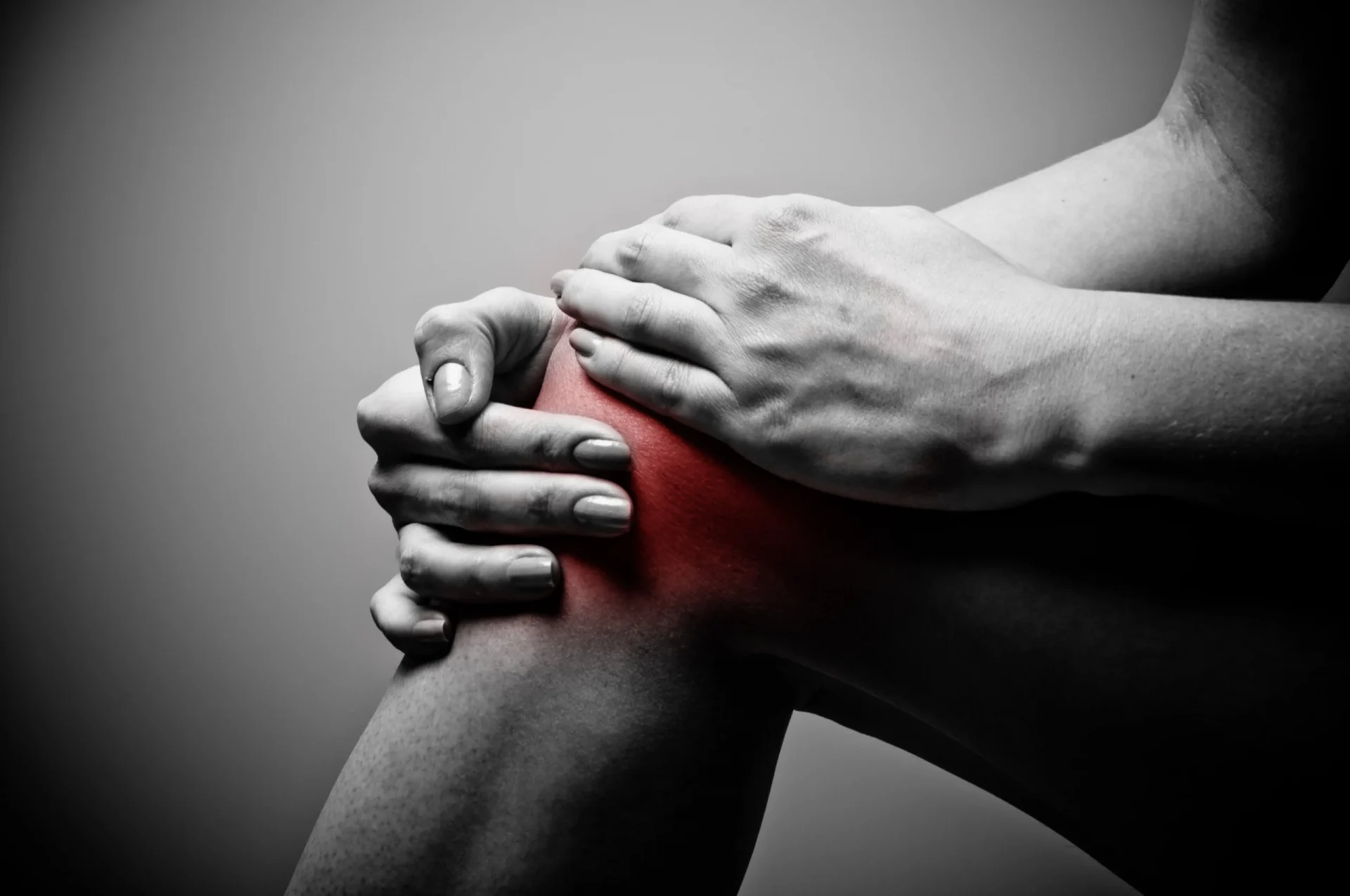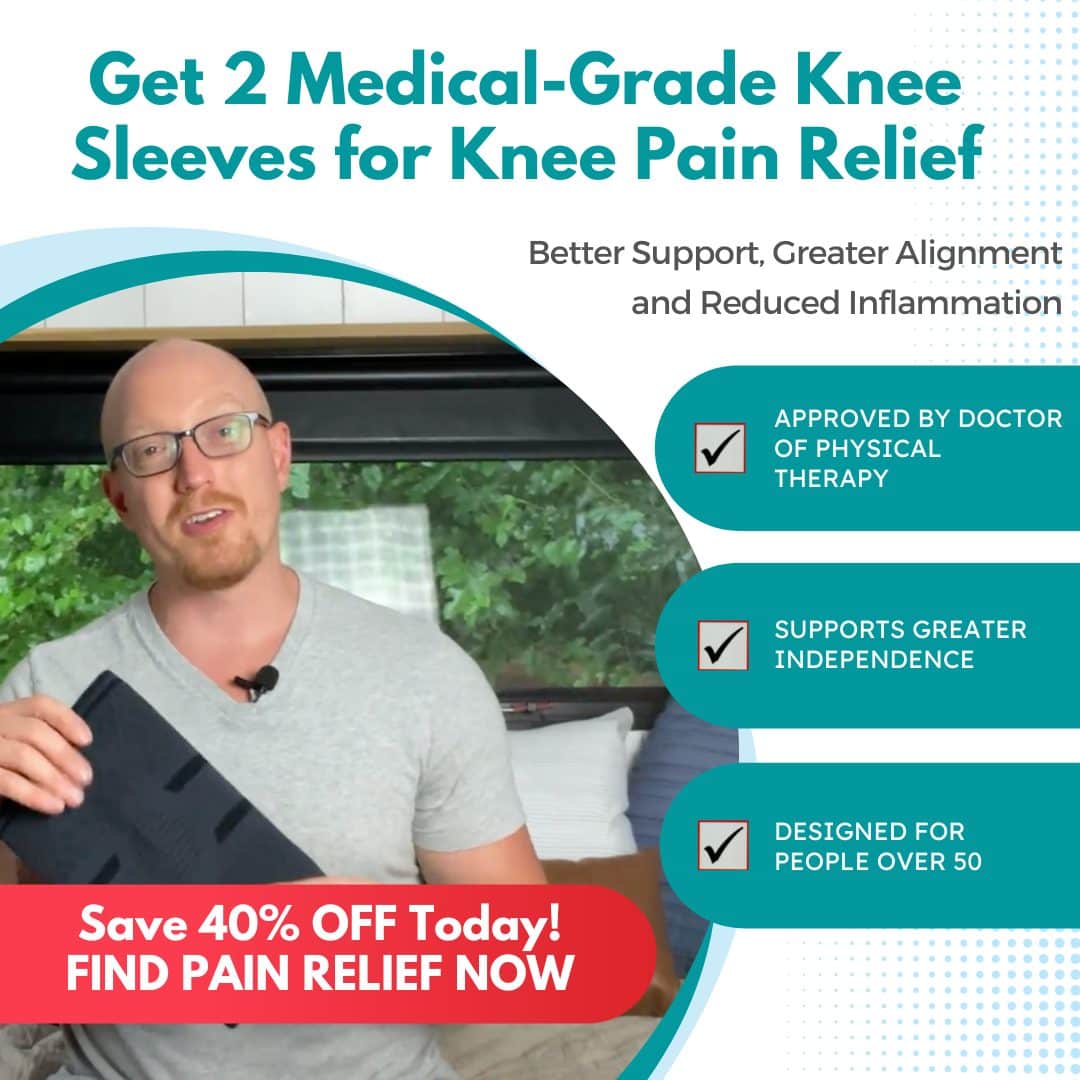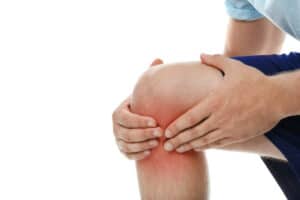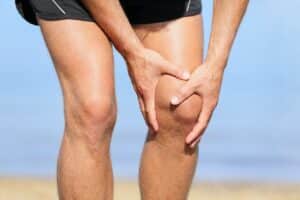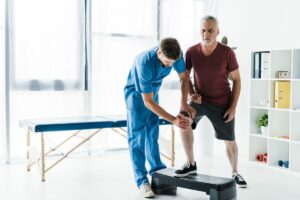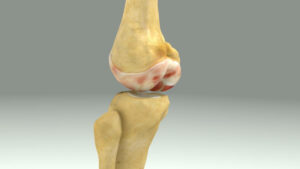Free download: Top 10 Natural & Easy Remedies for Joint Pain from Home. Learn these helpful remedies.
Estimated Reading Time: 8 minutes read
We’ve all heard the common saying “a pain in my….” well, you know what, but honestly that saying should be updated to “a pain in my knee.” Sure, it might not have the same punch, but that saying is true for a lot more of us.
It’s so common to have pain when bending your knees and the challenge with knee pain is that we can’t just stop using our knees.
You have to bend your knee when you walk, sit, climb stairs, drive, and more.
Pain when bending your knee is a real problem, so it’s important to learn potential causes for knee pain as well as ways to help with knee pain.
Table of Contents
Why Does My Knee Hurt When I bend It?
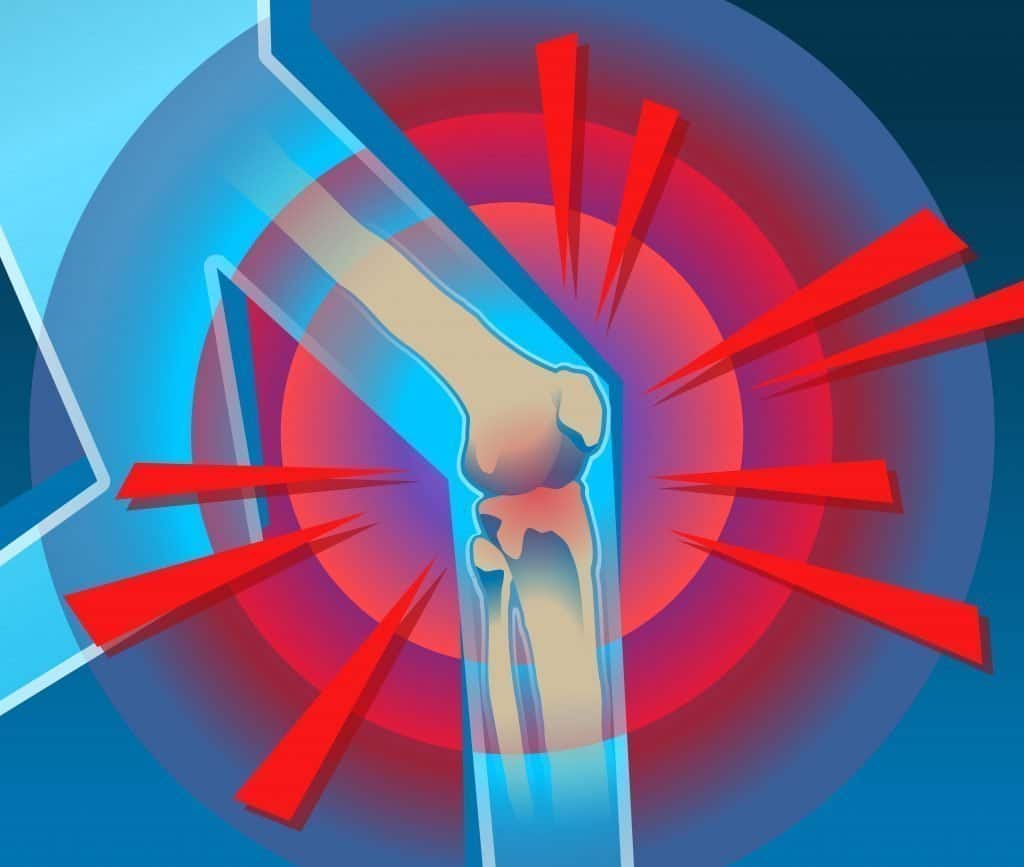
Finding the cause of your knee pain can be really helpful for ultimately finding the cure for your pain.
Here are some potential causes for knee pain, do any of them match what you are feeling?
Finding the cause of your knee pain can be really helpful for ultimately finding the cure for your pain.
Here are some potential causes for knee pain, do any of them match what you are feeling?
Possible causes include:
- Patellofemoral syndrome, which causes a dull ache in front of your knee and pain with stairs and squatting.
- Patellar tendonitis, which causes burning and pain in or at the base of your kneecap.
- Iliotibial (IT) band syndrome, which can cause burning pain outside of your knee that spreads to your hip or thigh.
- Hamstring tendonitis, which leads to pain behind your knee and thigh.
- Quadriceps tendonitis, which causes pain above or in front of your knee.
- Knee bursitis, which may cause swelling, warmth, and pain over or below the knee.
- Osteoarthritis, which causes diffuse knee pain, swelling, and stiffness especially in the morning. Pain typically improves with movement.
- Injury or trauma to the knee joint or ligaments, which may cause sharp pain, swelling, and difficulty moving the knee.
- Baker’s cyst, which might cause tightness and swelling behind your knee.
Maybe nothing has stood out yet so here’s some more help for narrowing down the cause:
The Location of Your Knee Pain
1. Pain Behind Knee When You Bend Your Knee
Pain behind the knee is common, especially if there is any swelling. When your knee swells the extra fluid tends to go straight to the back of your knee which causes discomfort and pain.
Pain behind your knee while bending may also be due to:
- Hamstring Tendonitis
- Baker’s Cyst
2. Pain above kneecap when bending
If you have pain above your knee when bending, you may have:
- Quadriceps Tendonitis
- Osteoarthritis
- Knee Bursitis
3. Pain in front of kneecap when bending
Potential causes of pain in front of or over your kneecap include:
- Patellofemoral Pain Syndrome
- Patellar Tendonitis
- Quadriceps Tendonitis
- Knee Bursitis
- Patellar Fracture
If Location Doesn’t Stand Out, Then What About The Type of Pain You Feel?
Very sharp pain in knee when bending
Conditions that may cause sharp pain while bending include:
- Torn ligament or meniscus, especially after a fall or traumatic injury.
- Knee or patellar fracture.
- Osteoarthritis, especially in the morning.
- Patellar tendonitis
If you have sharp pain when bending your knee check out this article for ways to help your pain.
What To Do If Your Knee Hurts When Bending It
We’ve covered a wide variety of caused for pain when bending your knee, but here are some good general tips to help with pain:

Rest your knee
As we’ve already discussed, this can be challenging because we have to bend our knee for everyday activities; however, if possible, try to limit the activities that cause the most pressure on your knee.
Some ways to do this are:
- Add knee pads or cushioning if you have to kneel or be on your knees.
- Sit on a chair rather than squatting our crouching for things like playing with your grandchildren.
- When you sit keep your knee slightly extended rather than bent 90 degrees.
- If possible, plan out your day to limit the number of times you have to go up and down stairs.
- Use a knee brace.

Use Ice or Heat
We’ve heard this a lot, “when I use Ice, and when do I use heat?”
Ice: If you have a lot of swelling use ice to reduce swelling and pressure in your knee.
Heat: If you have a lot of stiffness use heat to bring in joint fluid and to relax muscles to take pressure off your knee.
Sometimes it helps to use a combination of both! Test it out and listen to your body. You may find that one works much better than the other for your pain.

Warm-up your Knee Before Movement
While rest is great, we know that we have to use our knees. If you are about to perform a higher energy activity or one that you know will increase knee pain, this is the time to warm up your knees.
No not heat again – that’s step 2 – this type of warm-up comes from performing knee exercises.
The benefit of a warm-up is that there is plenty of fresh fluid moving in your joint and the muscles are ready to engage and support your knee.
Some quick warm-up exercises can be found here at knee exercises from bed. These are a great way to get your knees warmed up and ready all from the comfort of your bed!
Exercises To Reduce Knee Pain When Bending
Isometric exercises are a type of exercise where you activate your muscles without moving your joints.
Dr. Jennifer Reed wrote in “The Principles of Sports Rehabilitation,” that isometric exercises can help strengthen your knees without putting too much strain on the joint itself.
The following are three isometric options to try at home:
1. 3-Angle Isometric Knee Extension
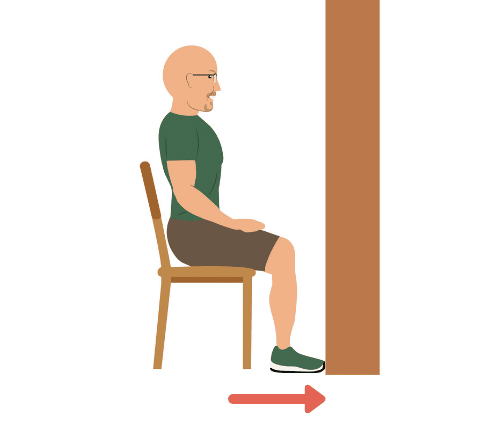
- Sit in a chair facing (and close to) a wall with your knee bent at 90-degrees.
- Extend your leg out against the wall and hold for 10 seconds.
- Then, slide your chair back so your knee is at a slightly larger angle, and again, extend the knee for 10 seconds.
- Slide the chair back one final time and repeat for 10 seconds.

2. 3-Angle Isometric Knee Flexion
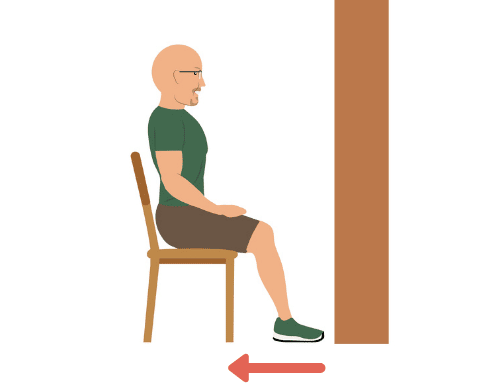
Now you’re going to activate the muscles in the back of your leg. Using a similar concept as above, start in the position that you last left off on.
Instead of using a wall, we’re going to use the floor and press your heels down/backwards for 10 seconds.
- Move your leg back towards the chair and again press down/backwards for 10 seconds at this new angle.
- Move your legs into a 90 degree angle and for the last time, press down/backwards for 10 seconds.
- Repeat these two exercises through 3 cycles.

3. Knee Press
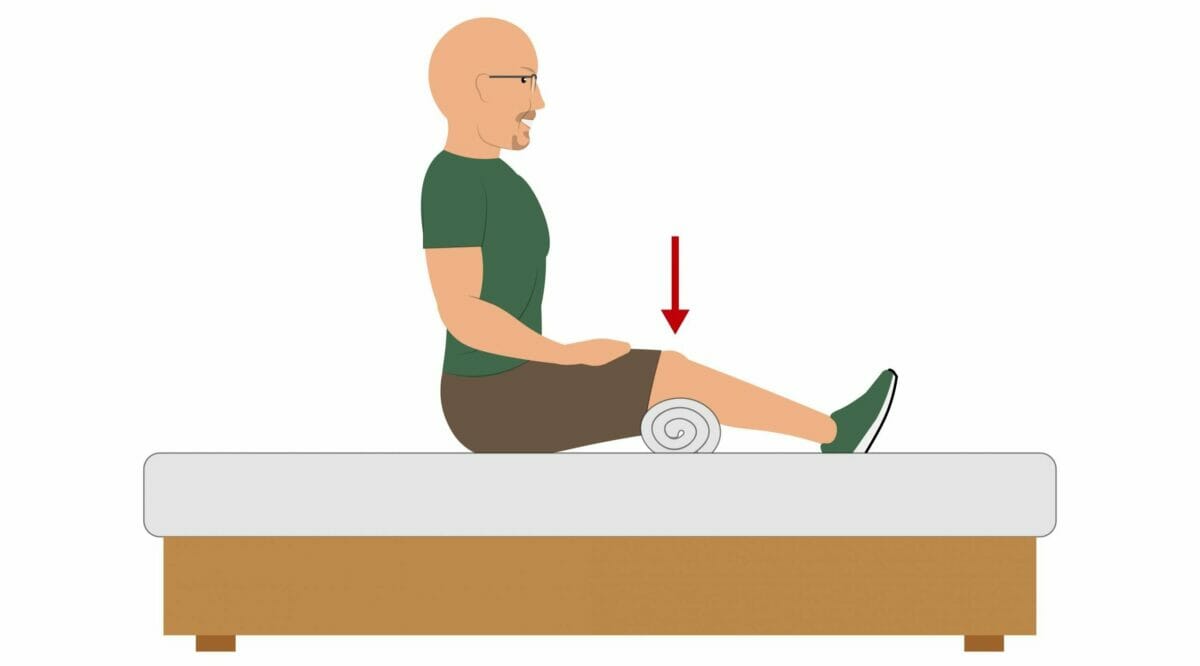
It’s now time to sit up in bed and extend your legs out straight.
- Grab either a pillow or rolled towel. Place the item under one leg, directly behind the knee. Rest your back against the headboard or lean back onto your hands if needed.
- While keeping good posture, press your knee into the towel/pillow for 10 seconds before relaxing.
- Repeat 3 times on the same leg then switch!
This is just the beginning, if you’re hungry for more exercises check out Feel Good Knees.
This program will help you learn ways to help with knee mobility to help get you back to performing your normal activities with less pain!
When to See a Doctor About Your Knee Pain When Bending
Pain is always scary because it can be hard to tell when it’s some to speak to your primary care physician.
Typically, if you have mild pain there isn’t a cause for concern and you can use the tips above to help.
You can also progress your knee exercises at home by checking out Feel Good Knees for even more information and exercises!
However, if you have sharp pain or recently experienced a knee injury accompanied by a popping noise, swelling, or inability to bear weight on the leg, then it’s time to seek medical help.
Pain when bending your knee can be a real… pain in a knee, but there are ways to take steps towards recovery so that you can get back to doing what you love to do without knee pain.


